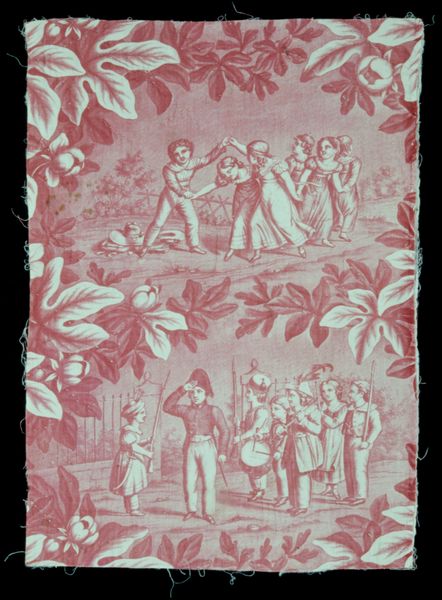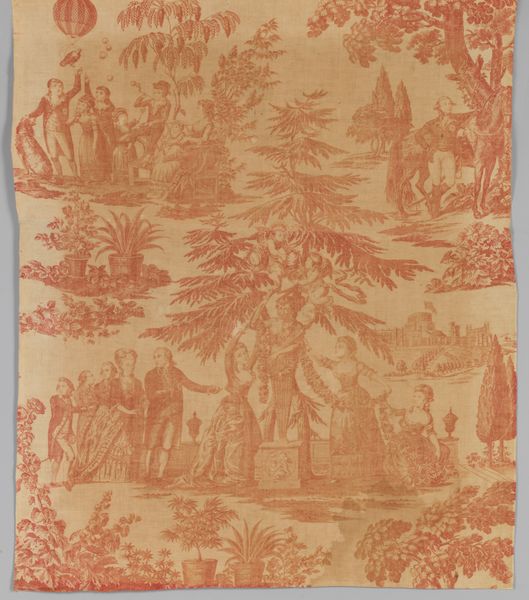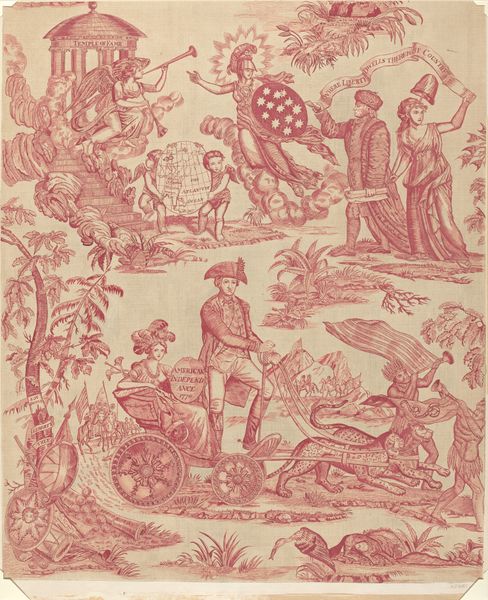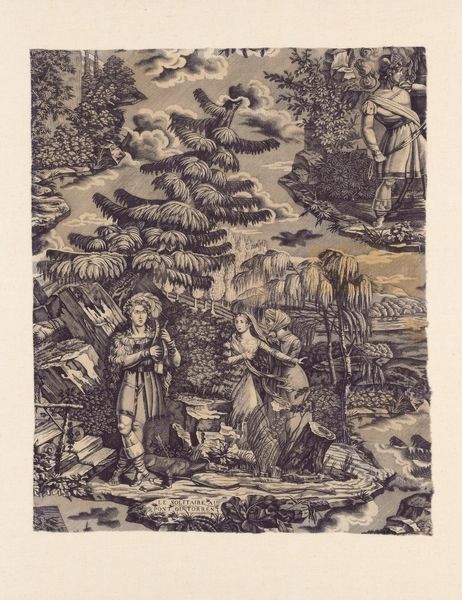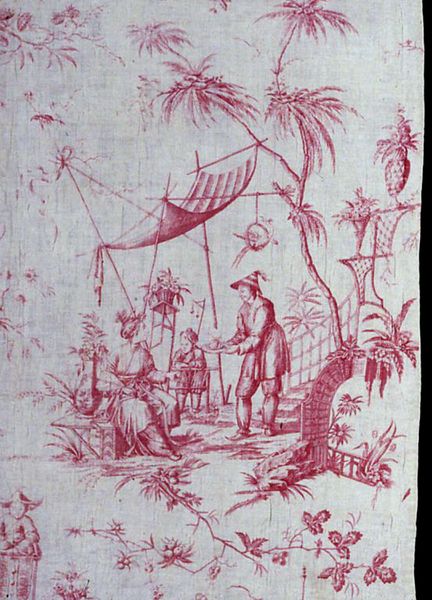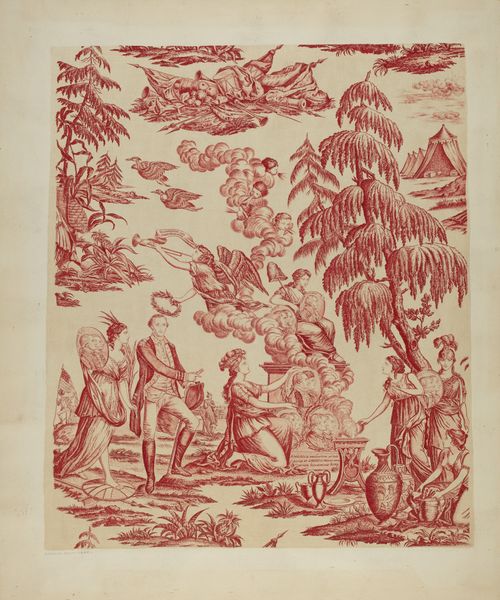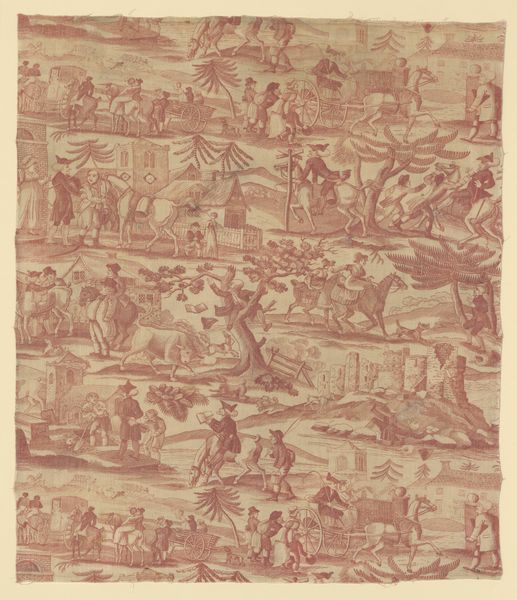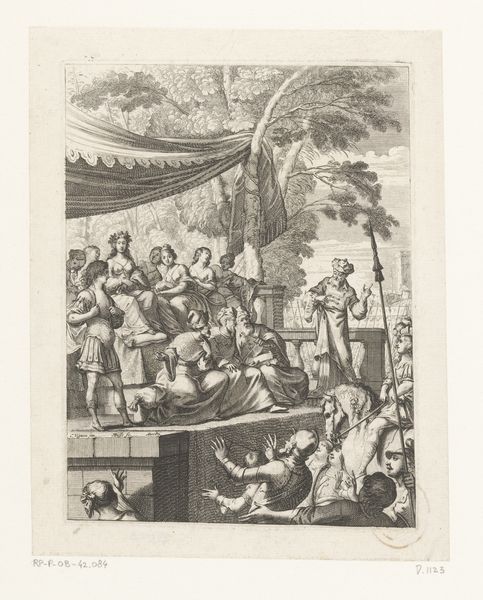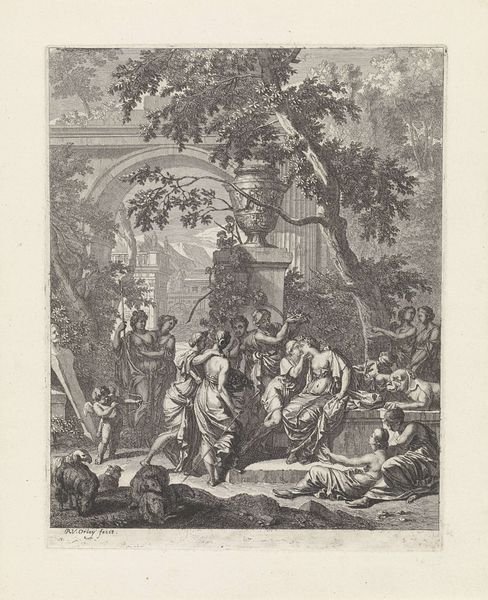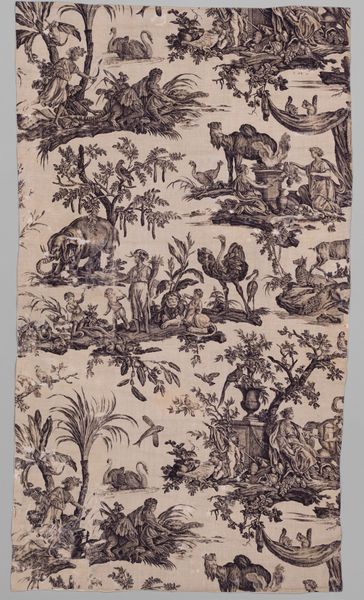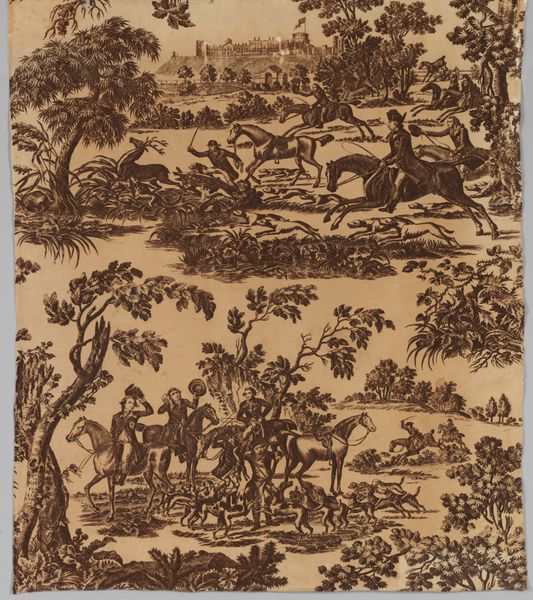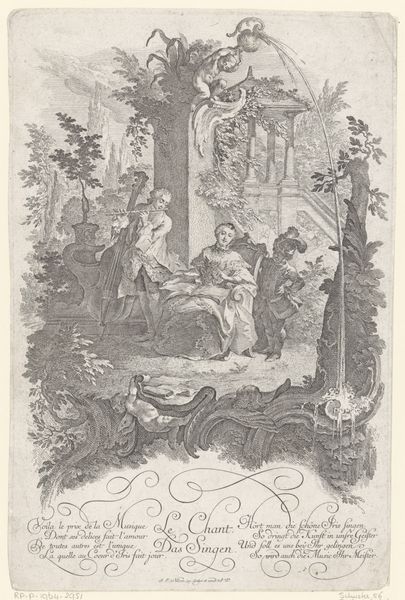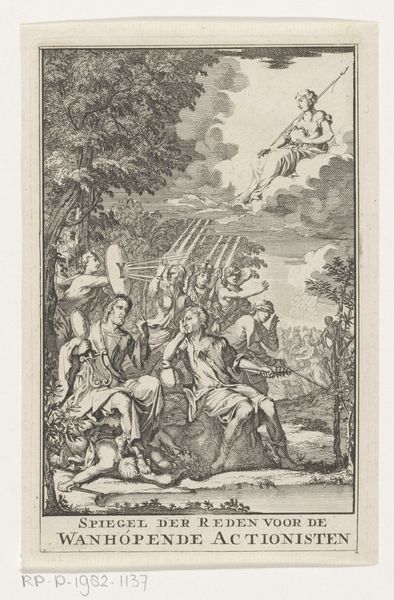
Dimensions: 96 x 38 1/2 in. (243.8 x 97.8 cm)
Copyright: Public Domain
Curator: Looking at this "Printed Piece" created between 1782 and 1785, it is immediately apparent that this is not merely a decorative textile; its production speaks to larger issues of commerce, class, and technological advancement. The artwork resides here at The Metropolitan Museum of Art. Editor: Oh, wow, the repetition and the faded red hue give it a dreamlike, slightly unsettling quality. It’s like peering into someone’s hazy memory of a revolution, all rendered in soft focus. Curator: The pattern repeats a classically inspired scene printed onto what was likely a linen or cotton fabric. The presence of classical figures like the seated woman on a wheeled chariot, combined with an obelisk and tropical palm, would have signified wealth and sophisticated taste to its owner. Editor: There’s an intriguing narrative frozen in time. Everyone is positioned, perhaps allegorically, on a strange sort of tropical stage. Almost like an exotic theater with love-struck cupids floating overhead. The red really pulls you in! It is almost unsettling. Curator: Absolutely, the use of red, commonly known as "Turkey red" at the time, required complex dyeing processes that often relied on global trade routes, illustrating the interconnectedness of nations through commodity exchange. Notice also how printmaking on textiles democratized access to art and design previously only accessible to aristocracy via painting or elaborate tapestries. Editor: The mass production adds a layer of social commentary. This piece bridges the gap between unique art object and the common household. It’s really got me thinking. Imagine owning something both useful and beautiful! What's also special is the imperfection of each printed sequence adds to its uniqueness! Curator: Precisely. As a piece made during the cusp of industrial advancements in textile printing, this work represents how machines started competing against artisans—raising serious issues about labour and economic justice during that era. It highlights that interplay. Editor: Thinking about those competing pressures – beauty vs utility, man vs machine – is truly insightful! The more I ponder this “Printed Piece," the more that simple color floods into complexity. I could certainly spend more time considering this unusual treasure. Curator: Agreed, its dual existence as practical material and potent symbol highlights the material circumstances and ideologies surrounding it. Fascinating, really.
Comments
No comments
Be the first to comment and join the conversation on the ultimate creative platform.
